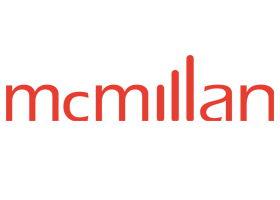


Trademarks: Material Misstatements in Declarations of Use Revisited
Trademarks: Material Misstatements in Declarations of Use Revisited
A Canadian trademark registration can be invalidated not only on the grounds enumerated in section 18 of the Trade-Marks Act (the “Act”)[1], but also, pursuant to the authority provided in section 57(1) of the Act, if an applicant, in connection with a trademark application, makes: (a) an intentional and fraudulent misstatement; or (b) a material misstatement that, while innocent, is fundamental to the registration of such application.[2] The impact of making material misstatements in an applicant’s declaration of use has varied depending on the context. In some cases, this has led to the subsequently secured trademark registration being deemed void ab initio,[3] while in other cases it has not.[4]
The impact of misstatements in a declaration of use was recently revisited in the decision of Roots Corporation v. YM Inc. (Sales), 2019 FC 16.[5] By way of background, YM Inc. (Sales) (“YM”) had submitted a trademark application for the mark CABIN FEVER and Design (the “Mark”) based on proposed use and in association with the following goods (collectively, the “Goods”):
“Men’s, women’s and children’s casual, dress, business and athletic clothing; fashion accessories, namely rings, earrings, necklaces, bracelets, scarves, belts, socks, handbags, sunglasses; cold weather accessories, namely mittens, gloves, scarves, hats, toques; footwear, namely shoes, boots, slippers and sandals.”
In order to bring its application to registration, YM submitted a declaration of use affirming that it had begun using the Mark in connection with all of the Goods. The application was subsequently registered and issued a registration number of TMA961,583 (the “Registration”).
Roots Corporation (“Roots”) applied to the Federal Court to have the Registration struck from the register on a number of grounds, including on the ground that the declaration of use filed by YM to obtain the Registration contained material misstatements that were fundamental to the Registration, thus rendering the Registration void ab initio. On the other hand, and while YM acknowledged that its declaration of use was in fact false, YM nevertheless took the position that the misstatement was not fundamental to the Registration, and that, regardless, the Registration should not be found void ab initio since YM was using the Mark in association with some of the Goods, including:
“men’s, women’s and children’s casual and athletic clothing; scarves, socks, mittens, gloves, hats, and toques.” [6]
The Federal Court found that the misstatement made in the declaration of use was indeed material (i.e. the Mark would not have been registered, but for the misstatement). However, rather than adjudge the Registration as void ab initio, the Federal Court opted to amend the Registration, under the authority granted to it in section 57(1) of the Act, by removing from the Registration the goods in association with which YM had not used the Mark:
“Men’s, women’s and children’s casual, dress, business and athletic clothing; fashion accessories, namely rings, earring, necklaces, bracelets, scarves, belts, socks, handbags, sunglasses; cold weather accessories, namely mittens, gloves, scarves, hats, toques; footwear, namely shoes, boots, slippers and sandals.” [7]
Each party bore its own costs of the proceeding.
Take-Home
The courts are clear that a material misstatement in a declaration of use can be considered fundamental to the registration of a mark. That being said, in cases where a declaration of use has been filed but where the mark has only been used in association with some of the declared goods/services, a court may choose to exercise its discretion to amend the registration by removing the goods/services with which the mark has not been used, rather than render the entire registration void ab initio.
It is also important to note that when changes to the Act come into force in June 2019, declarations of use will no longer be required to bring an application to registration. Nevertheless, the Roots decision will continue to be relevant to registrations for which a declaration of use has been filed, and applicants should continue to take care to avoid making misstatements in their declarations of use for as long as such declarations are still required. It is also important to note that despite the fact that YM was able to keep its Registration (albeit with an amended set of goods), YM was still responsible for its legal costs in defending the Registration, and such costs can be significant (and much more than the costs associated with carefully executing a declaration of use).
by Pablo Tseng, Lindsay Dykstra and Sharon E. Groom
[1] Trade-Marks Act, RSC 1985 c T-13.
[2] See for example, Unitel Communications Inc v Bell Canada (1995), 61 CPR (3d) 12 (FCTD) [“Unitel”], General Motors of Canada v. Décarie Motors Inc., [2001] 1 FC 665 , and more recently reiterated in Coors Brewing Co. v Anheuser-Busch, LLC, 2014 FC 716.
[3] Ibid, Unitel.
[4] See Parfums de Couer Ltd. v Christopher Asta, 2009 FC 21, in which the registrant incorrectly believed that it was sufficient to be using some, but not all, of the goods listed in the trademark application at the time of making the declaration of use. Upon notice, the registrant amended the subsequently granted trademark registration to remove the goods not used. The court determined that if a misstatement is innocent and in good faith, the registered owner will have an opportunity to amend the registration.
[5] Roots Corporation v YM Inc. (Sales), 2019 FC 16. [“Roots”]
[6] Ibid, Roots at paras 65- 67.
[7] Ibid, Roots at para 74.
a cautionary note
The foregoing provides only an overview and does not constitute legal advice. Readers are cautioned against making any decisions based on this material alone. Rather, specific legal advice should be obtained.
© McMillan LLP 2019
Insights (5 Posts)View More
Ontario (Might get the) Right to Repair – An overview of Bill 187 the Right to Repair Consumer Electronic Products, Household Appliances, Wheelchairs, Motor Vehicles and Farming Heavy Equipment Act, 2024
Ontario considers new right to repair legislation for consumer products and motor vehicles.
More Than Meets the Eye: The Legal Implications of British Columbia’s Agreement to Recognize Aboriginal Title Over Haida Gwaii
An analysis of legal implications related to the BC Government's agreement with the Haida Nation to recognize Aboriginal title over Haida Gwaii.
Lessons Learned from the TTC’s Ransomware Attack
Lessons learned from the recent investigation by the Ontario IPC into the effectiveness of the TTC's cybersecurity measures and ransomware attack response
Don’t Get Caught by Canada’s Patent Novelty Grace-Period
The key difference between Canada and other jurisdictions like the United States when relying on the grace-period for inventor disclosures.
Shifting Gears – Canada to Consider New Motor Vehicle Equipment Regulations to Help Prevent Auto Theft
Transport Canada announces plan to update safety standards to combat auto theft.
Get updates delivered right to your inbox. You can unsubscribe at any time.






